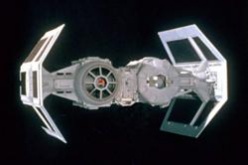Difference between revisions of "TIE/sh Shuttle"
From TheHolo.Net Forums Wiki
| Line 27: | Line 27: | ||
Darth Vader's Imperial Death Squadron made extensive use of the TIE shuttle during the Hoth campaign of 3 ABY to deliver face-to-face messages between Star Destroyers of the fleet in order to minimize sensor and communications interference. | Darth Vader's Imperial Death Squadron made extensive use of the TIE shuttle during the Hoth campaign of 3 ABY to deliver face-to-face messages between Star Destroyers of the fleet in order to minimize sensor and communications interference. | ||
| − | [[Category:Star Wars Ships (by Class)]] [[Category:TIE | + | [[Category:Star Wars Ships (by Class)]] [[Category:TIE Series]] [[Category:Imperial Starfighters]] |
Latest revision as of 20:15, 26 April 2013
The TIE/sh shuttle or, more commonly, the TIE shuttle, was a short-range personal priority shuttle the Imperial Navy used to quickly transport high-ranking officers and other cargo between capital ships of a fleet and ground stations.
Design
The Sienar Fleet Systems TIE/sh was a variant model of the twin-pod TIE/sa bomber and TIE boarding craft used by the Imperial Navy as a priority transport for command-level officers and other cargo between starships of a fleet and ground installations. Unlike the TIE bomber, the TIE shuttle was not designed for combat. Minimally armed with a single laser cannon for protection of important passengers and not very maneuverable.
History
Darth Vader's Imperial Death Squadron made extensive use of the TIE shuttle during the Hoth campaign of 3 ABY to deliver face-to-face messages between Star Destroyers of the fleet in order to minimize sensor and communications interference.


